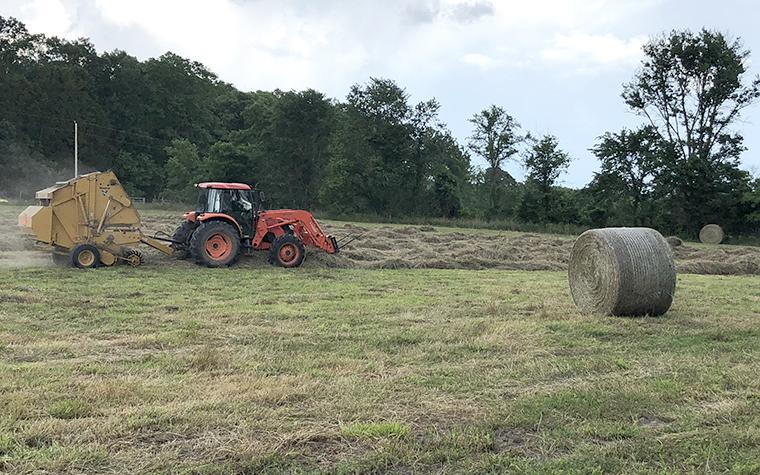POTOSI, Mo. – In May, University of Missouri Extension field specialist in agricultural business Rachel Hopkins and her father harvested and wrapped wheat and clover baleage at their farm in east-central Missouri.
“After everything was done, Dad said, ‘When you get a chance, figure out what this feed cost us,’” she recalls. Hopkins keeps records for the farm’s hay crop, but she had never broken the cost down by field.
Why track feed costs?
Every operation is different, but knowing the cost of stored feed is important, says Hopkins. “Even if you're just feeding your own livestock, it still matters.”
Why? Because if you can buy feed cheaper than you can make it, you’ll save money—and time. “And as we all know, time is money,” she says. “If you’re selling extra hay, and you’re selling at a loss, it is not good business practice.”
Baleage costs
Hopkins and her father made baleage to supplement their cows in the winter instead of using feed tubs or grain. To calculate the cost, they used the MU Extension Mixed Hay Budget, which figures cost on a per acre basis.
Here's how it breaks down:
Yield
• The 4 x4 bales weighed 1,100 pounds. The baler is equipped with scales.
• This equals 3.42 tons per acre and 6.21 bales per acre.
Operating costs per acre
- Seed: $30
- Fertilizer: $31.71
- Herbicide: $10
- Custom hire and equipment rental: $95.80
- Fuel: $2.20
- Repairs: $8.96
- Labor: $37.99
- Interest: $9.21
- Total operating cost: $225.87
Ownership costs per acre
- Overhead: $5
- Machinery ownership: $14.05
- Land/real estate charge: $17.50
- Total ownership cost: $36.55
Total cost per acre is $262.42.
That comes out to $76.73 per ton or $42.25 per bale, says Hopkins.
Once they get the forage test results, Hopkins will calculate the cost per pound of dry matter. “That will help us compare this baleage to other feed options,” she says.
“Even if you’re not making baleage, dry hay season is here,” says Hopkins.
“It might feel money is growing on trees right now with high cattle prices, but don’t be fooled: Hay production takes a lot of time and money,” she says.
Plug your numbers into one of MU Extension’s Ag Business forage budgets to see what your production cost is, or contact your local MU Extension agricultural business specialist.
Photo
Making hay
Simple math and MU Extension ag business forage budgets can help you calculate production costs of making your own hay. Photo courtesy of Rachel Hopkins.
